Viñales is a very popular destination for most tourists heading to Cuba. So it goes without saying that the tour agencies try to do their best by offering you a plethora of activities and tours to select from. After much debate and discussion over the many tours available to explore Viñales valley, we finally decided to go for the walking tour in the Palmarito valley. I preferred this over the horse back riding as i like to take lot of photos and this gives me the option to stop or slow down as i please. Even with the walking trip there are many different options but in the end, the words of an extremely tired and disgruntled Cubanacan(a tourist agency) lady made sense to me : “Everything is same in Viñales valley, all the mogotes look same”(Wondering what are mogotes? Keep reading…). I thought there was some truth coupled with her frustration in answering the same questions to curious tourists like us. If you are interested in finding out about all the different options then check out my blog post on Things to do in Viñales.
Start of the walking tour
As advised we were at the tour office at 8.50 am but so were many other tourists. The place looked a bit chaotic and after asking around a bit they asked us to go to a museum to exchange our agency tickets with the real tickets. They told us that they had a shortage of guides that day so they asked us to join a Dutch group. Our guide Douglas spoke good English and that is all we really needed so we didn’t mind joining a tour group. One of the side roads led us into the valley.
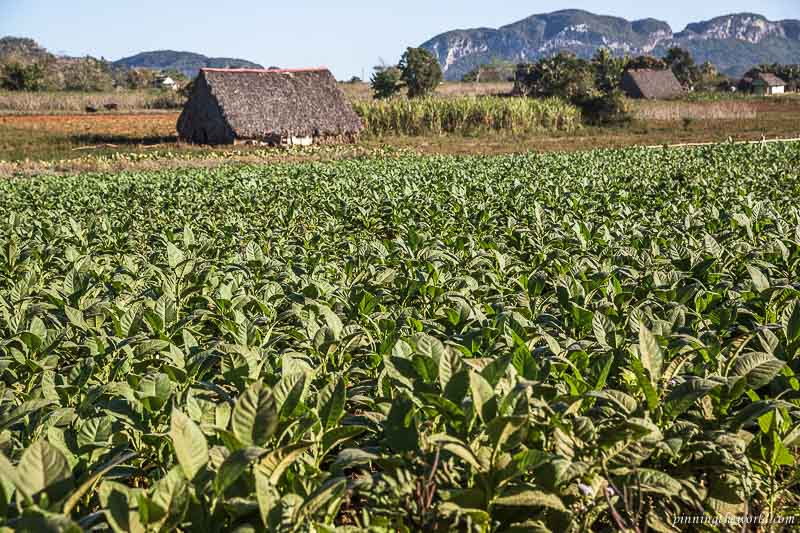
Lush tobacco farms with mogotes forming the backdrop – Love at first sight!
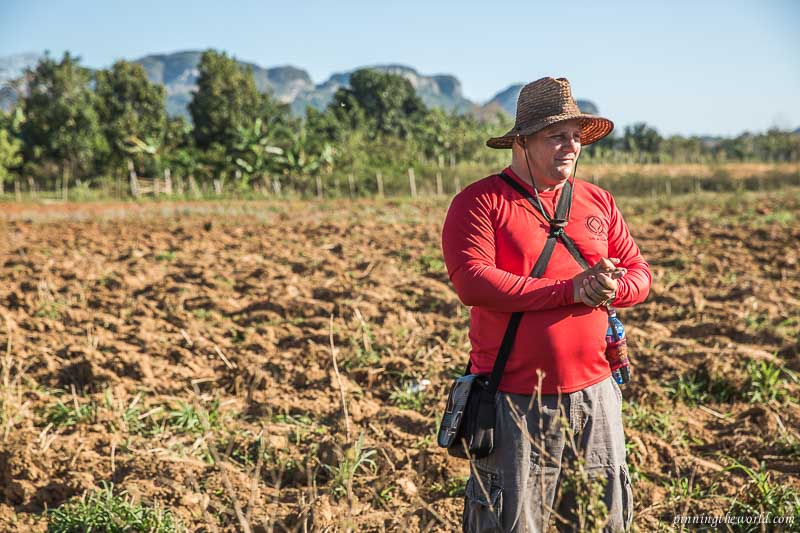
Our guide Douglas explaining us the ins and outs of Viñales valley
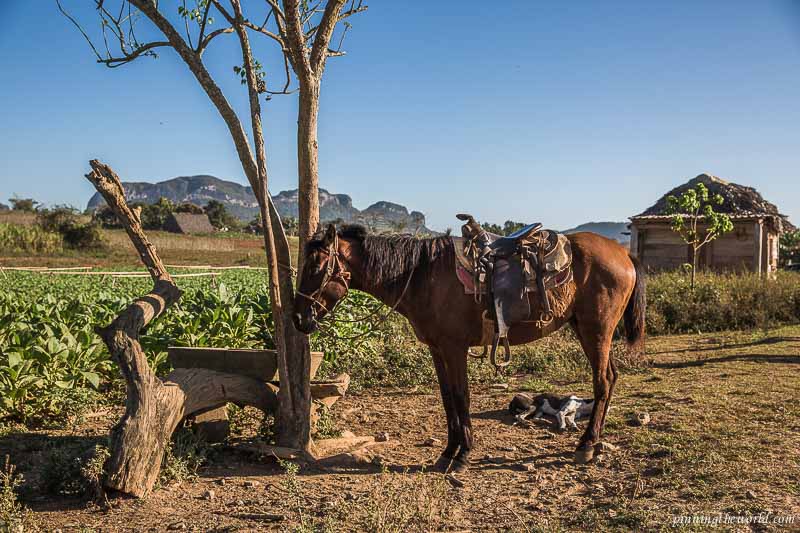
Fancy exploring the valley on horseback?
Viñales valley and its mogotes
Mogotes dominated the skyline of Viñales valley while lush verdant farms filled up its floor. In fact it is these rounded limestone hills called mogotes which bring the Viñales valley to life. Combined with the perfect sunny weather and clear blue skies, it was a pleasure to walk in the valley. Red necked vultures were a constant fixture circling the skies. The mogotes rise like islands from the valley floor and millions of years ago this whole area was under the sea. Douglas reminded us of similar karstic formations in other parts of the world like Halong Bay in Vietnam and Guilin in China among many others. This also means Viñales valley has an extensive cave system in many places and Santo Tomas caves being the biggest of all. This UNESCO heritage valley is spread over an area of 132 sq km and hence you will end up exploring just a section of it. We explored the Palmarito valley but you will be spoilt for choice with the different options.
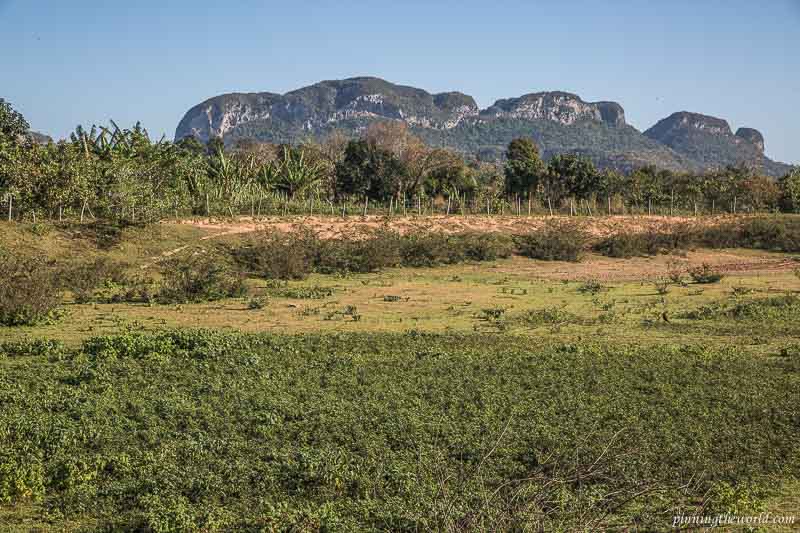
Striking karstic landscape of Viñales valley
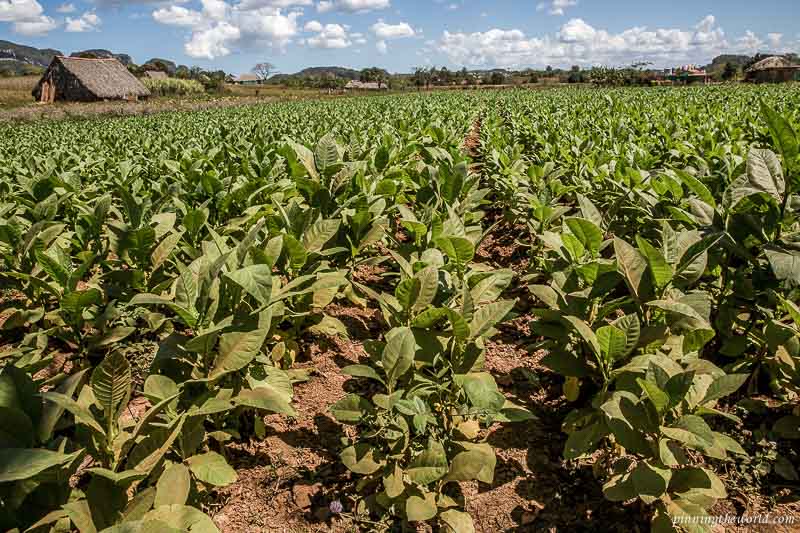
Verdant tobacco farms dominate the valley floor
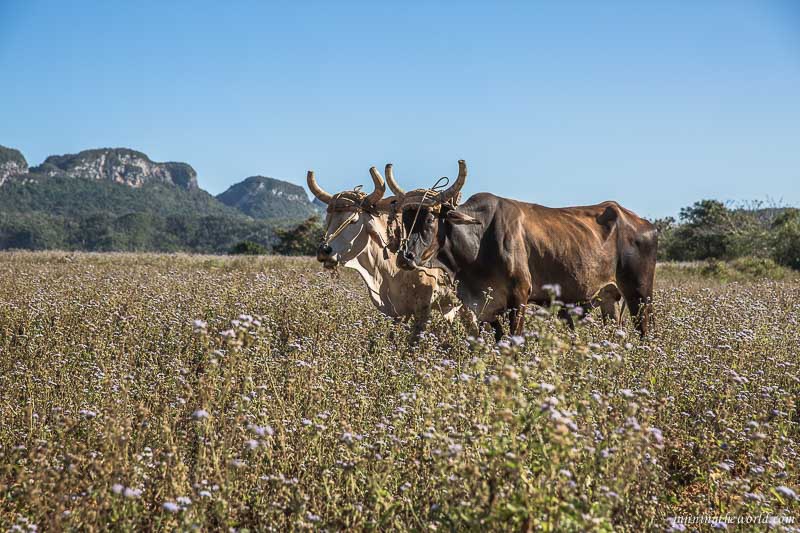
Viñales with its rural, laid back atmosphere and its uber friendly locals is a magnet for travellers
We waved to our fellow travelers on horse backs setting off to the explore the valley, much like us. As we walked further we passed by some local houses including some shelters purpose-built for hurricane protection.The nutrient rich red soil in the Pinar del Rio province makes it ideal for growing tobacco and other crops. Our guide also pointed out an interesting fact that all the products grown in this region are grown organically. After discussing the effects of fast food and the resulting new age health problems we walked deeper into the valley. Overall the walk in the valley was really easy except for one small climb.
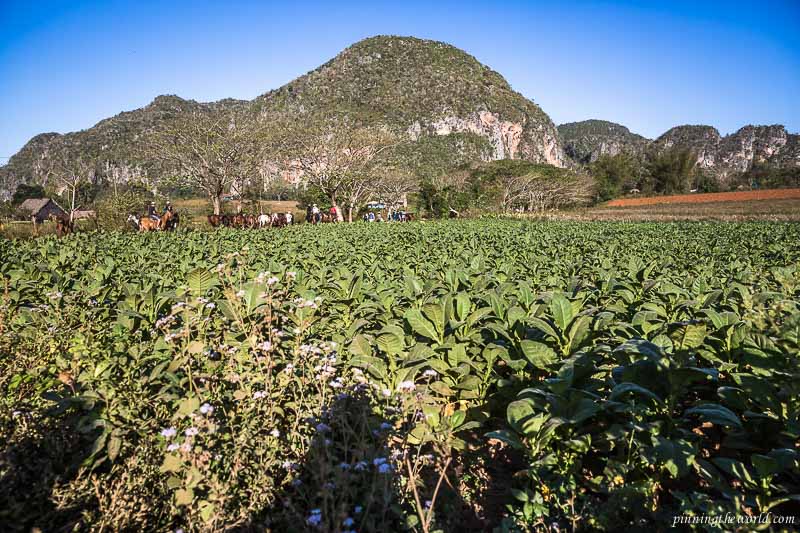
Picture perfect Viñales valley dotted with mogotes
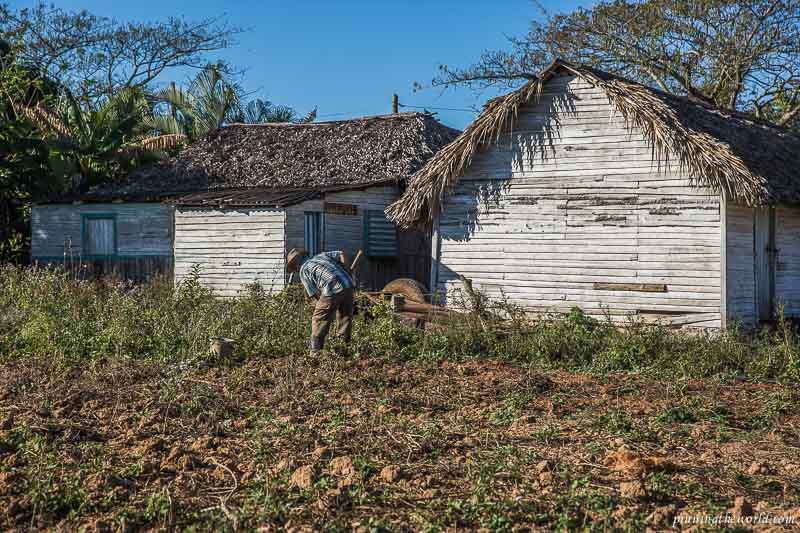
A farmer harvesting some tubers
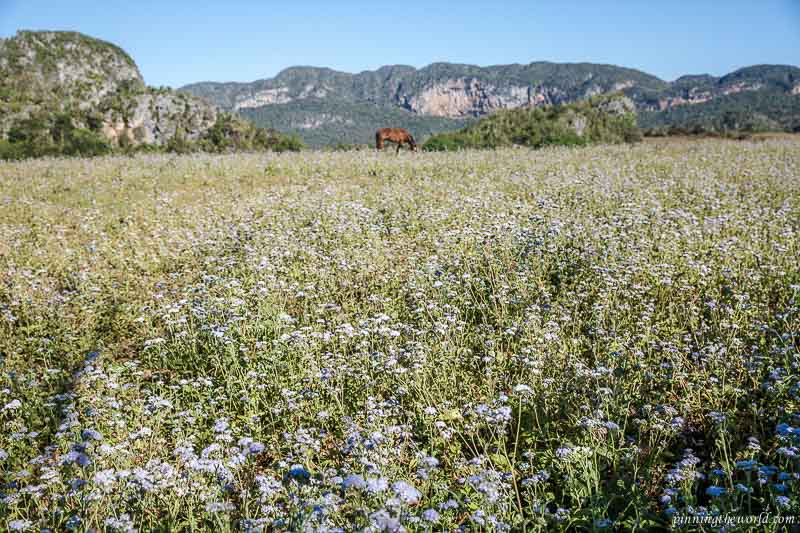
Enchanted by the rustic scenery all around!
The scenery all around was very rustic and serene. As we walked along Douglas familiarized us with the local flora and fauna. The hens & cows roaming around and the abundant plantain and coconut trees reminded me of my granny’s village in south India but minus the humidity. They grow a lot of tubers like yuca/cassava, sweet potato & yam in this region. They also have some variety of chili peppers but its only eaten by the birds and hence referred to as “spice of birds”. I bravely volunteered to give it a try. But a tiny bite was already too much even for my spice friendly indian palette. Our guide quickly plucked a guava from a nearby tree and munching on that calmed me down a bit.
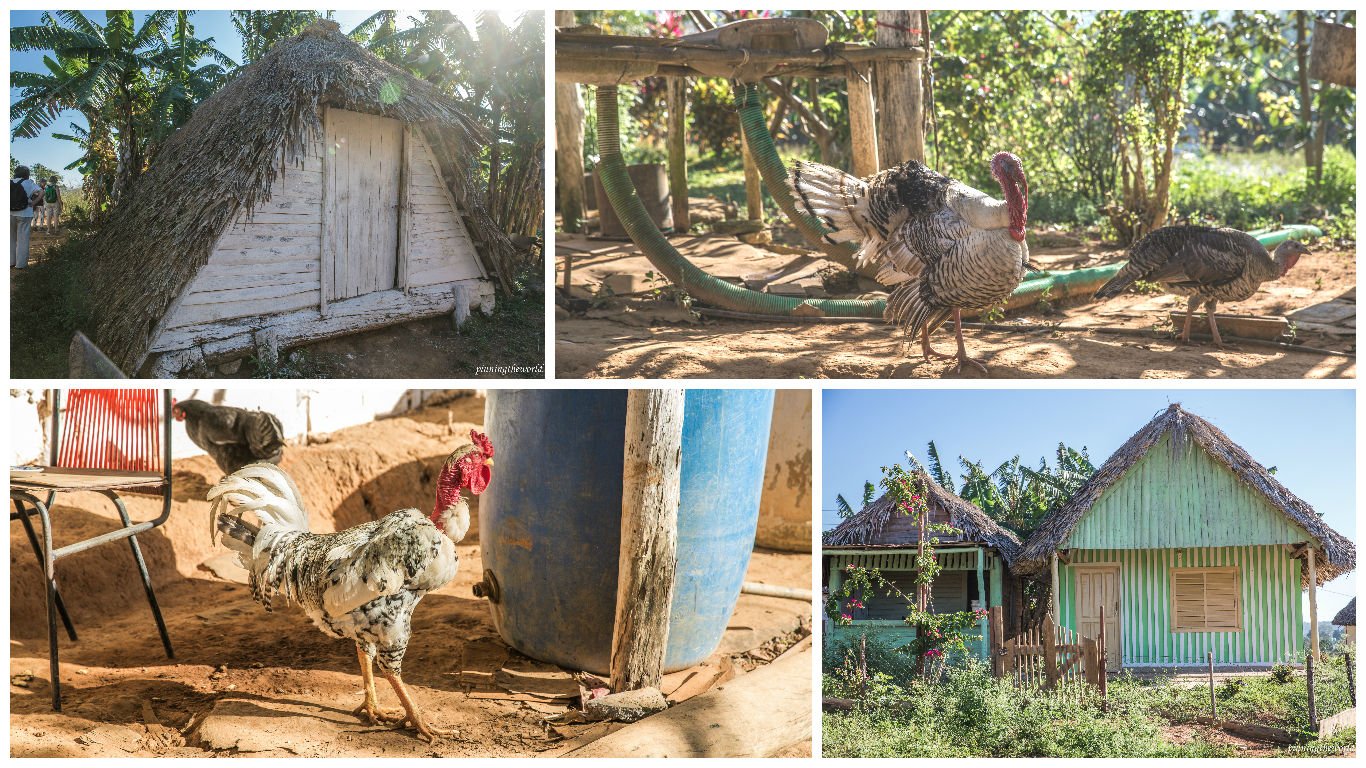
Top left: a purpose built hurricane protection shelter. Bottom right: Some pastel coloured local houses in the valley.
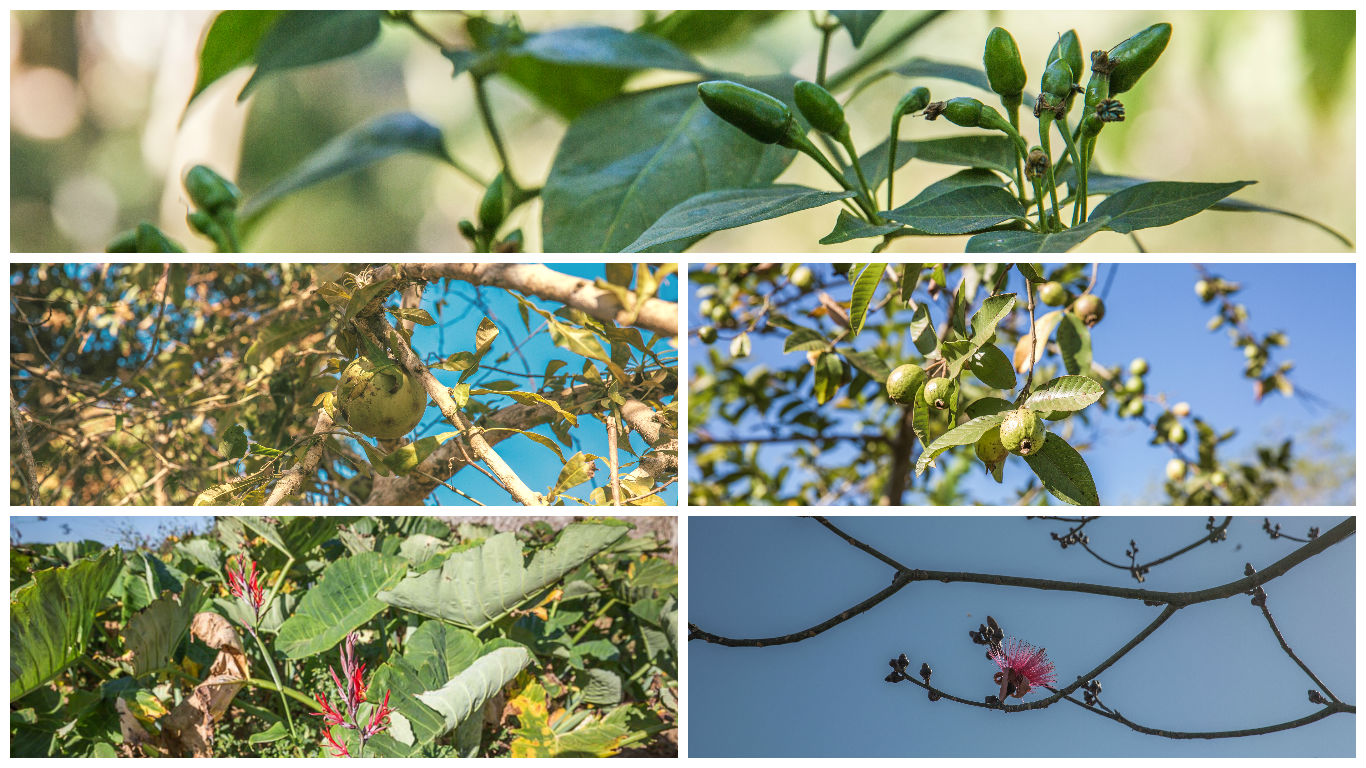
Much of the farming in Vinales valley still uses the age old organic methods. From the top – chilli peppers, a local gourd variety (also used for making musical instrument like maracas), yam,shaving brush flower and guava.
Life of a farmer in the valley
As we continued on our walk we stopped at the resting hut of a farmer. There we had a chance to interact with a hard working 75 year old farmer. Most of us were curious to understand how the communist system worked in Cuba. After the revolution, when Fidel Castro came to power he promised the farmers that they could keep the land as long as they sold the produce to the government. Tobacco farmers can keep 10% of the produce for themselves and sell it privately. The rest is bought by the government at a fixed price. Since the price is not decided based on demand and supply, the farmers usually earn very little. One of the downsides of an not having a free market economy i guess. If a farmer dies or decides to retire, his farm would pass on to his sons. As the hard labour of working in a farm is not considered suitable for the ladies, the daughters don’t inherit the land. After retiring, the farmers receive a meagre pension. This was the reason the 75 year old farmer preferred to toil in the harsh caribbean sun instead of enjoying a pensioners life. We bid him goodbye and continued our walk further. We stopped for some much needed refreshments at a cafe in the valley. After quenching our thirst with some cooling coconut water we continued our walk.
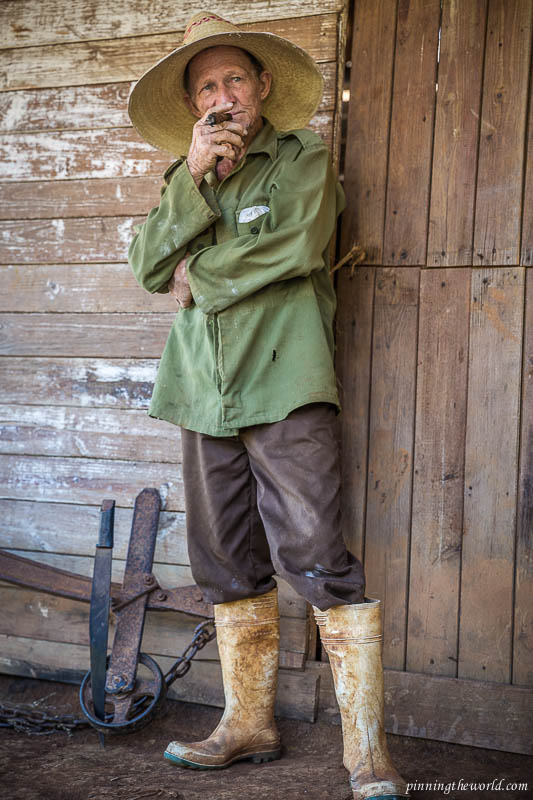
A hardworking Cuban farmer. Well now, its time for a break! (and a cigar, of course)
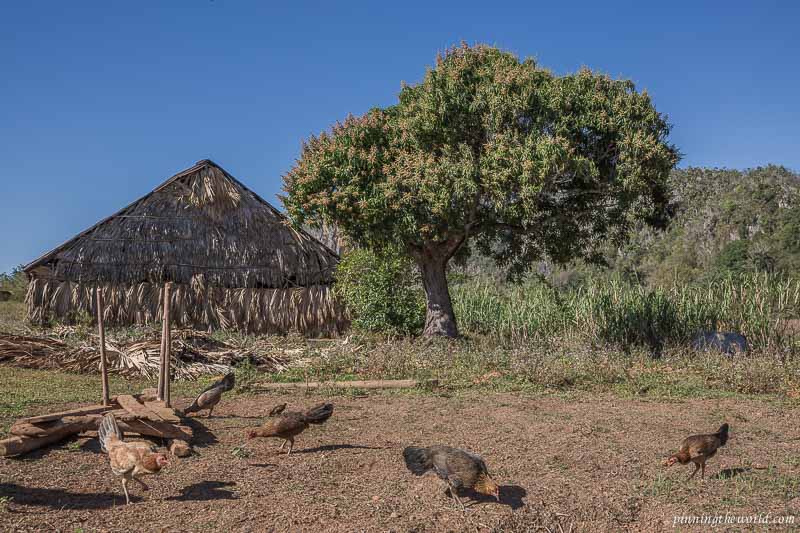
Charming rural scenery all around in the valley
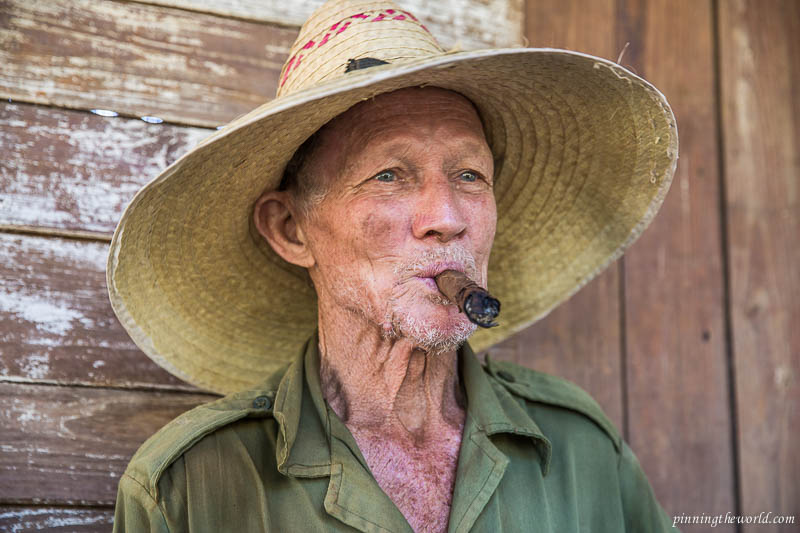
A 75 year old cuban guajiro aka farmer!
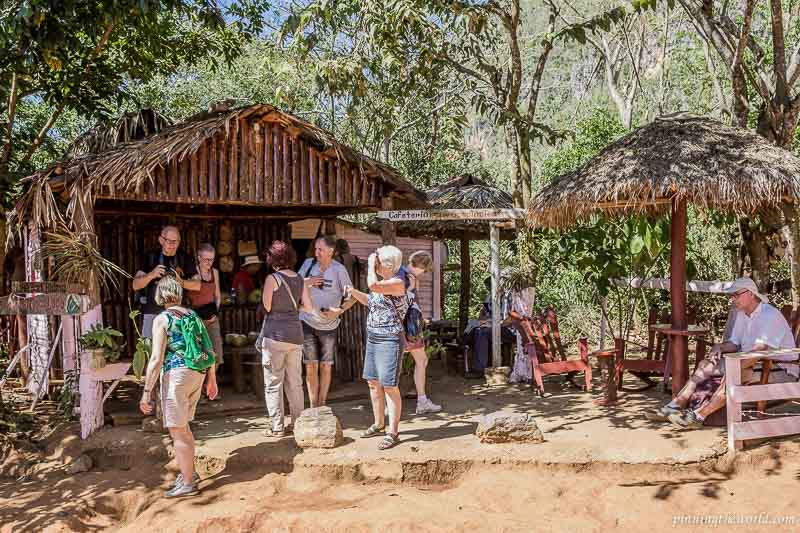
A much needed break at a cafe to quench our thirst with some fresh coconut water 🙂
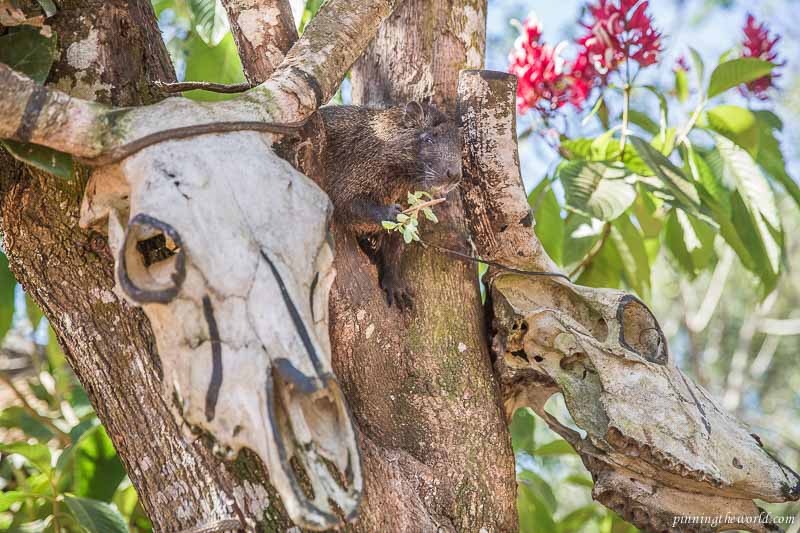
Hutia(belongs to the rodent family) spotting during our refreshment break!
A lesson in cigar rolling
Now we were on our return leg of the walk. The rest of the group had already been to a tobacco farm and hence Douglas made arrangements for us to visit a farm or finca as they call in Spanish. We were lucky to get a personalized experience for just the two of us. Since we spoke some Spanish it was easy for us to communicate with lady of the farm, Elena. She showed us how they air dry the tobacco leaves first for weeks and then when they are ready to be rolled they remove the main vein of the leaf to reduce the level of nicotine. Few of the leaves are crushed and form the core and then rolled inside another leaf called the wrapper. A nice wrapping paper is wrapped around it to make it tighter. The tobacco leaves are actually quite thick and rubbery and don’t crumple even after they are dried.
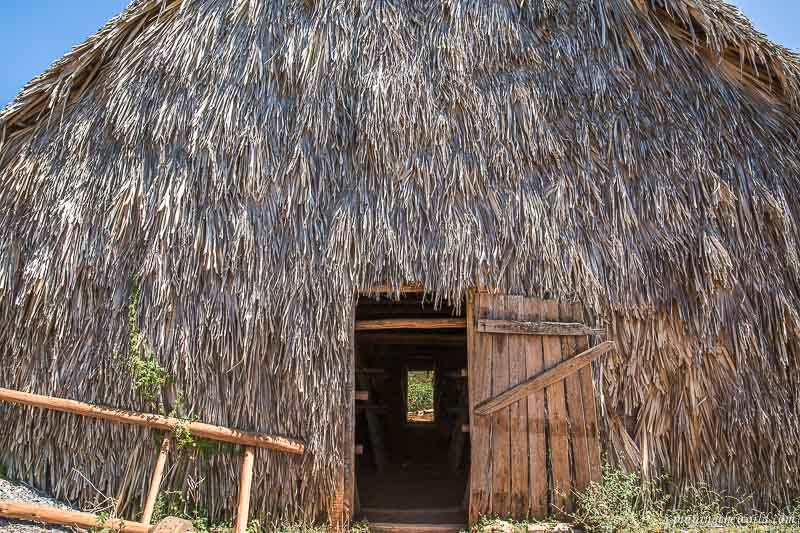
Thatched hut for drying tobacco
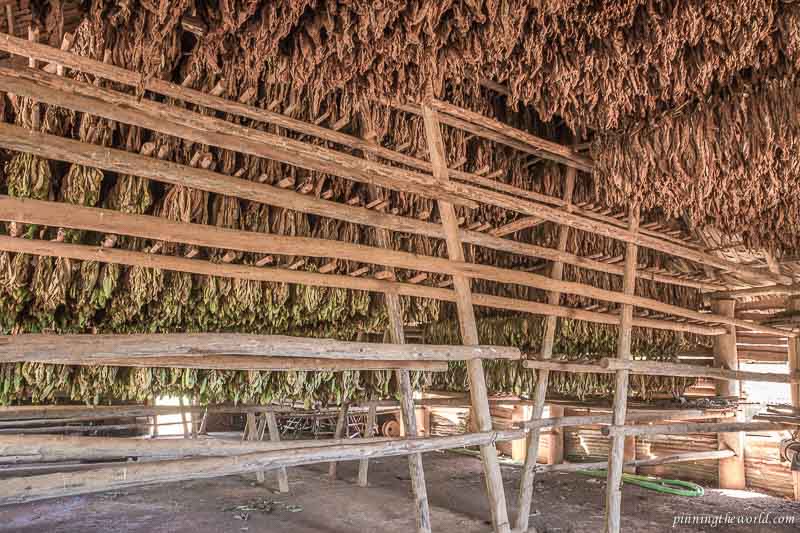
Tobacco curing in progress in a Vinales farm. Notice that some leaves are still fresh and more green. Tobacco curing by air takes a good few weeks
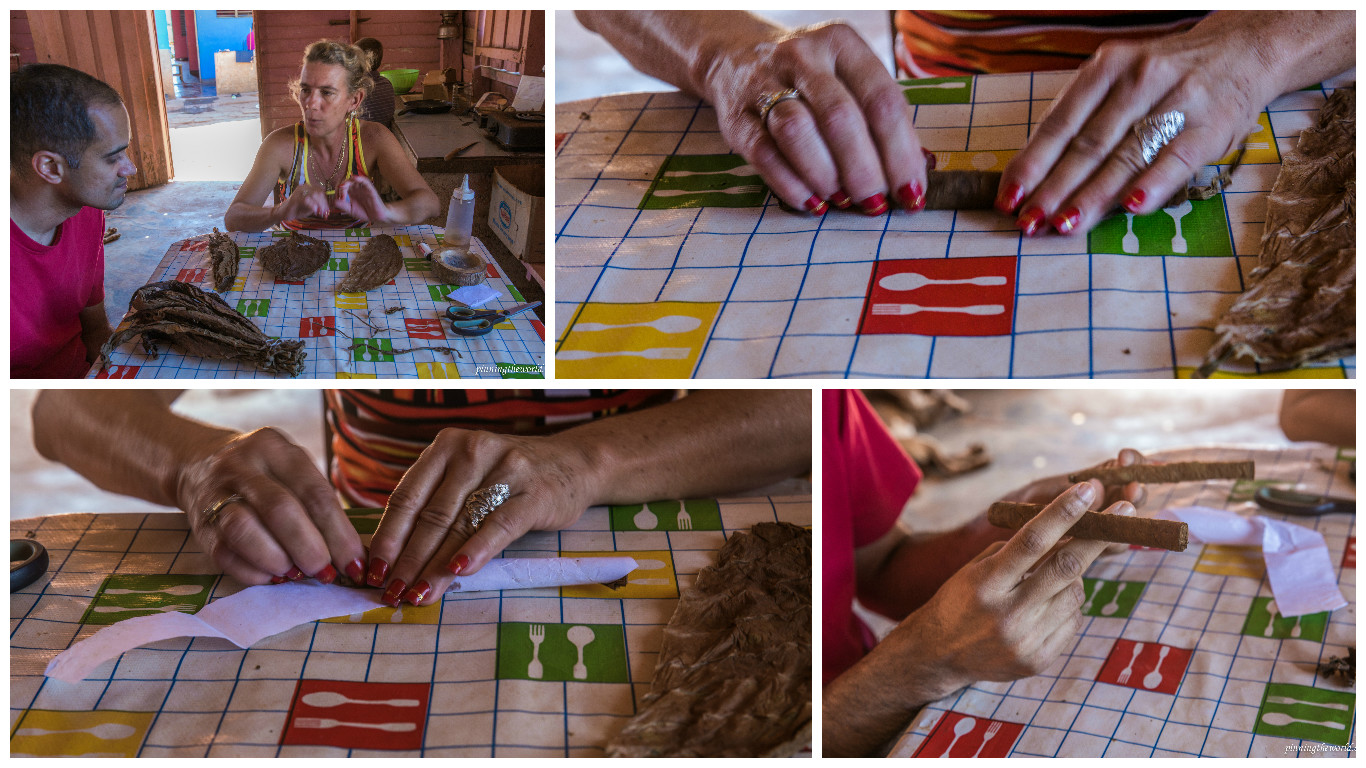
Cigar rolling lesson at a tobacco farm in Vinales
Then came the most interesting part where we could smoke a cigar. I have never smoked in my life so i diligently listened to Elena as she gave me some tips. But i have to say i kinda got a hang of it quickly. In other words i was happy that at least i didn’t end up in coughing bouts. Sridhar was not so fond of the smell or the flavor. So he quit after a few drags. But i walked back from the farm to Vinales town enjoying my Cuban hand rolled cigar. I don’t know if it was the tobacco at work or me being excited about doing something for the first time, nevertheless i was a happy camper!
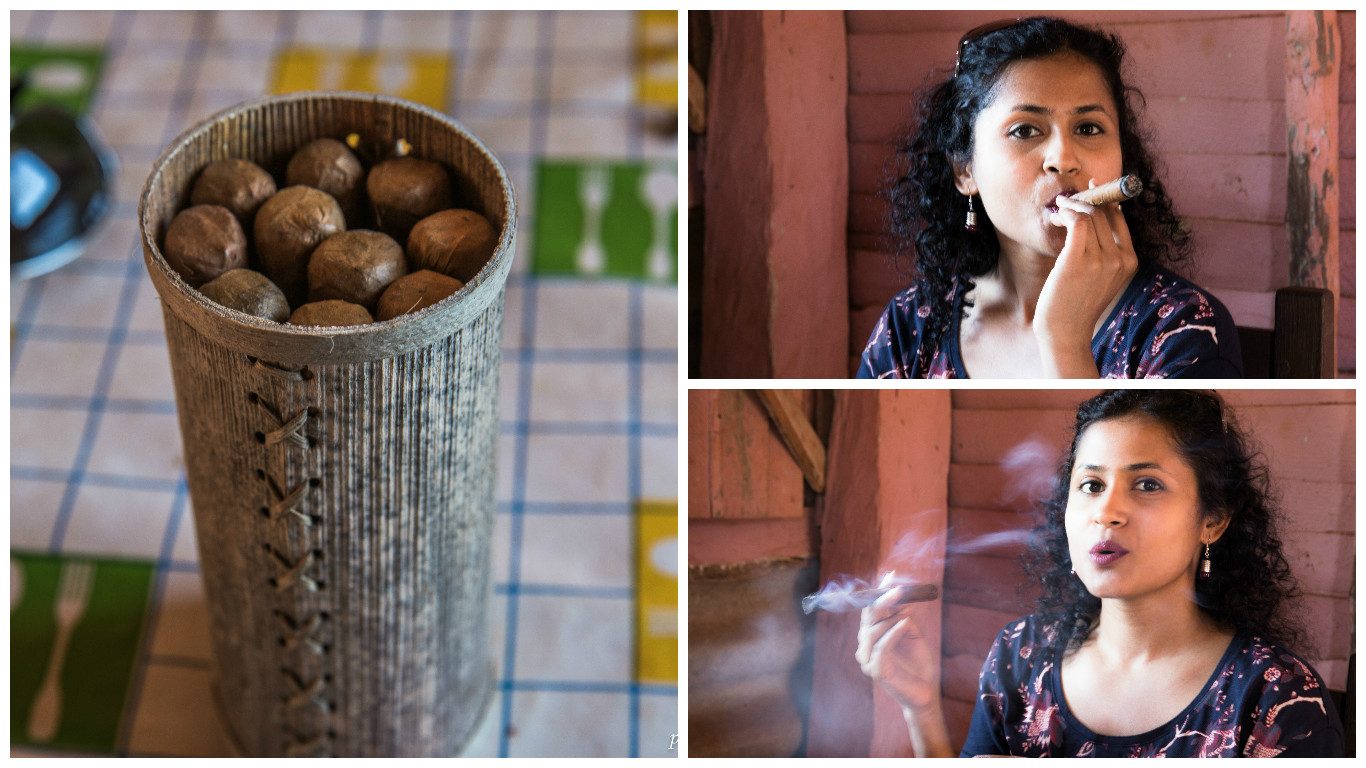
Enjoying a freshly rolled cuban cigar

Elena’s tobacco farm set amidst the scenic landscape in Viñales valley
Some practical tips about the walk
- Toughness : Easy
- Time taken : 3 hours
- Cost : 10CUC per person
- Best timing for the walk : The walks are conducted twice a day, in the morning at 9 and then in the afternoon at 2. But in my opinion it is better to explore the Viñales valley in the morning to avoid the harsh afternoon sun.
- Carry some small change with you. This will come in handy for tips.
- You can buy cigars at the tobacco farms. If you are not keen on branded cigars you can get a good deal at the farms and you will be helping a local earn some extra cash.
- You are allowed to carry upto 50 cigars per person without declaring to customs.
Have you been to the Vinales valley? Would love to hear about your experience. Or if you are planning a trip there and would like some advice, drop in a line or ten in the comments below 🙂